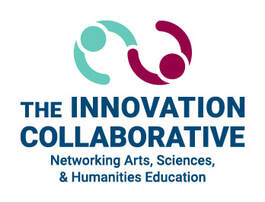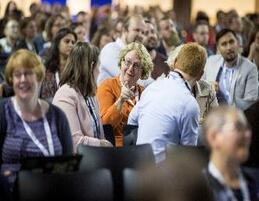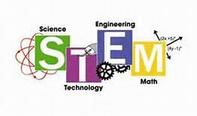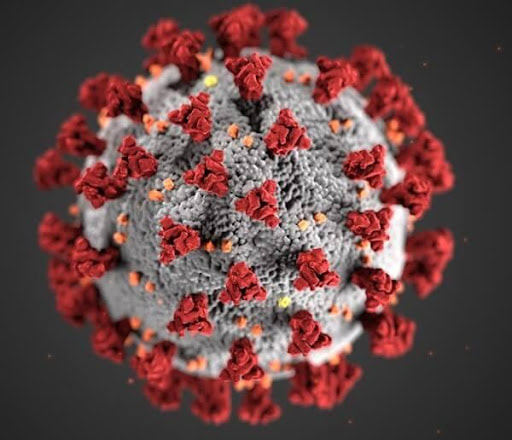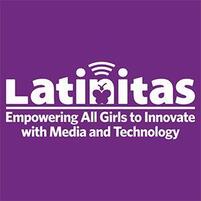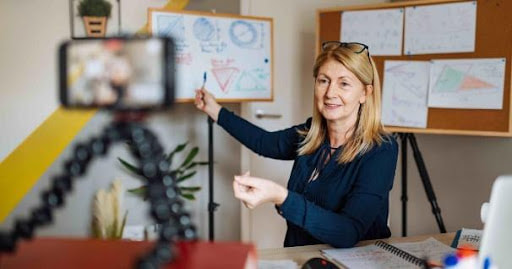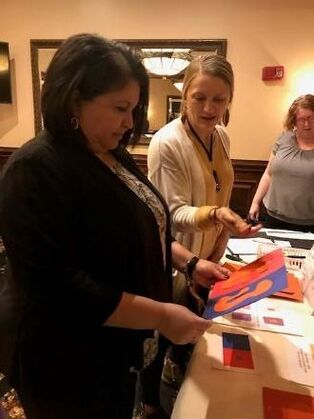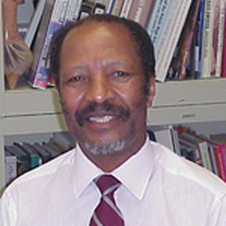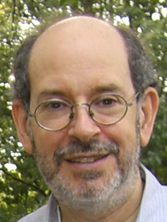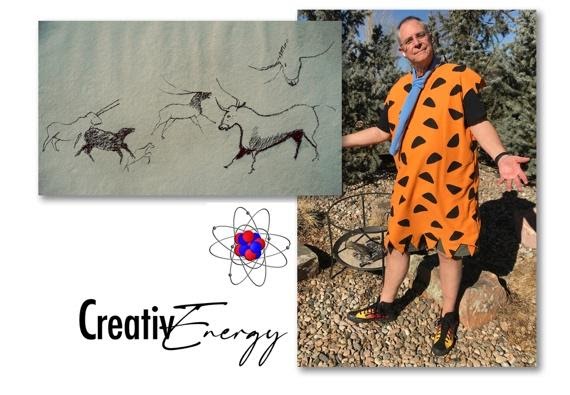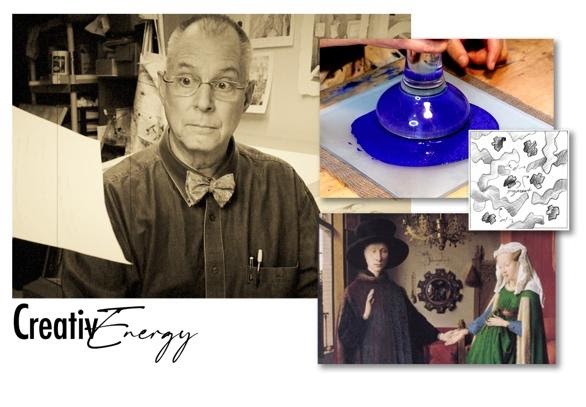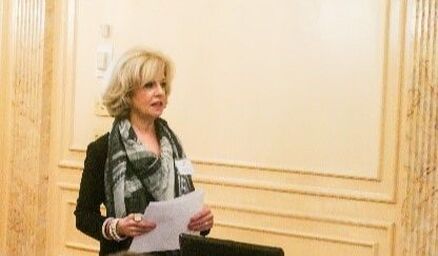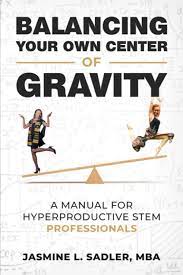 Jasmine Sadler, MBA, influential member of the Collaborative’s Advisory Council and its Diversity and Out-of-School-Time Committees, has published a very helpful manual for beginning professionals. Though addressing STEM careers, the book is applicable to early-stage professionals in any careers. It offers helpful advice on identity, interpersonal relationships, time management, planning for the future, work-life balance, and much more. It guides young adults through the complexities of beginning a promising career. Ms. Sadler also is CEO of the STEAM Collaborative, which develops leaders to promote success for underrepresented groups. She integrates her degree in aerospace engineering with her training as a ballerina to enhance the education of diverse students though integrating STEM and the arts. Winner of numerous awards, Ms. Sadler was recently selected as an IF/THEN Ambassador by the prestigious American Association for the Advancement of Science (AAAS). The IF/THEN Ambassadors are females who have made a significant contribution to STEM. Her statue, along with those of other IF/THEN Ambassadors, was on view this spring in Washington DC. They were on view at the Smithsonian Castle and participating Smithsonian galleries across the National Mall. Ms. Sadler has an MBA and is currently pursuing a doctorate in educational leadership. To find out more about the book, go to: https://www.amazon.com/dp/0991052153
0 Comments
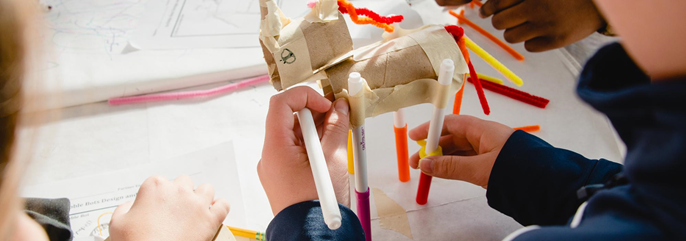 Tinkering for Early Childhood Tinkering is great for early childhood settings, but there is a great need for resources providing information on how to offer these important experiences. A great resource is now here! Tinkering Together: Exploring Findings and Futures in Early Childhood Tinkering is a National Science Foundation-funded online multimedia site that explores, “tinkering, making and STEAM in early childhood”. It is led by tinkering experts at the Exploratorium museum in San Francisco and features important early learning practitioners such as childcare providers and representatives of programs in libraries and museums. On this website you can see informative videos, podcasts, and reflections from these experts, along with tinkering practices in a variety of settings in addition to resources to develop your own early childhood experiences. To find out more, go to https://tinkeringtogether.org/  Why is STEAM Important in Today’s Education? As today’s students prepare for a workforce and future problems that can’t be imagined today, innovation is key. That is where STEAM comes in. It can teach students not only the mandated disciplinary content but also how to question, experiment, solve problems, and create. Learn more by following this link: https://onlinedegrees.sandiego.edu/steam-education-in-schools/ 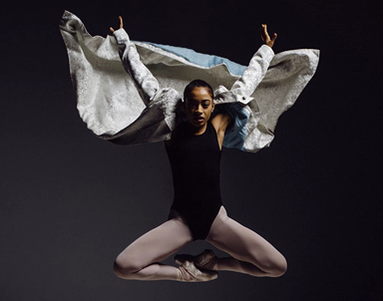 Increasing STEM Diversity Through Dance The STEM from Dance (SFD) initiative reports that Black and Latina women occupy only 4% of the STEM workforce. This initiative uses dance to empower and encourage low-income minority girls to pursue STEM careers. It operates in 14 states and 3 countries. It has received numerous awards, including being recognized worldwide by Zoom as a Zoom EdInnovation Award Winner. The SFD founder, Yamilèe Toussaint Beach, like the Collaborative’s Jasmine Sadler (see Collaborative Member Authors Useful Book for Early-stage Professionals in this newsletter) was named an American Association for the Advancement of Science (AAAS) IF/THEN Ambassador as a STEM female role model. She has training in mechanical engineering in addition to dance. Find out more at https://www.stemfromdance.org/ 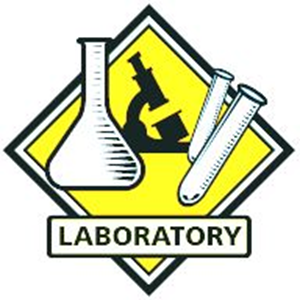 Addressing Overcrowding in STEM/STEAM labs and Makerspaces STEM/STEAM labs and Makerspaces have specific requirements to ensure student safety. However, according to research, these labs are experiencing overcrowding with larger class sizes. This overcrowding affects occupancy loads that take into account lab size, types of hazards, and number of exits. The overcrowding also is affected by teacher-student ratios. This can lead to accidents. Learn more about this by following this link: https://www.nsta.org/blog/lab-safety-overcrowded-stemsteam-labs-and-makerspaces 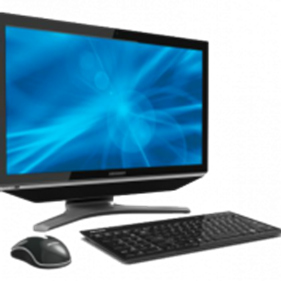 Transform Learning with Digitized Museum Collections With COVID restrictions, many educators have had to re-imagine what learning looks like. This includes developing effective online learning tools to engage and educate students. One impressive tool is digitized museum collections. These fascinating collections make available to students and teachers a wide variety of opportunities for exploration. While this article points out how science museum resources can be used, these strategies also can be adapted to other museums, such as art and history museums. Integrating these can provide engaging STEAM experiences. Learn more at https://www.nsta.org/connected-science-learning/connected-science-learning-march-april-2022/rethinking-online-science  In the March/April, 2022, issue of National Science Teaching Association’s (NSTA) journal for middle school teachers, Science Scope, authors Laura Blue and Sarah Redick provide a framework for teaching science through the lens of social justice. This was inspired by a resource called Facing History (see below). Standards for the program were derived from the work of an organization known as Learning for Justice. This activity provided an entry point for teachers to incorporate a sociotransformative approach to teaching in the context of life science. The curriculum incorporates four key elements of the social justice approach:
Resources: Facing History identity map activity Learning for Justice Socially Transformative Teaching .National Science Teaching Association (NSTA). The National Science Teaching Association will host educators in Houston March 31-April 2, 2022. Conference strands include: Developing Scientific Literacy in the Classroom, Strategies for Creating Inclusive Science Classrooms, Using Science Inquiry to Facilitate Learning for Multilingual Learners, Promoting Effective Assessments in the STEM Classroom, and Developing Accountability Systems for Expanding STEM Participation. Go to Houston National Conference on Science Education | NSTA to learn more. 22 Education Conferences You Won’t Want to Miss Go to 22 Education Conferences You Won't Want To Miss In 2022 (weareteachers.com) for a description of 21 other conferences, in addition to the NSTA conference listed above, designed for collaboration and inspiration. International STEM in Education Conference There is still time to apply to present in Waikiki, Hawaii, June 8-10, 2022 at the International STEM in Education conference. The conference intends to stimulate our nation’s future economic prosperity through encouraging and inspiring more of our brightest academics in the study of STEM/STEAM and Education fields. Overview | HUIC (huichawaii.org) Other Conferences
“Necessity is the mother of invention”, as they say. And the resurgence of COVID variants, especially as they affect younger children, has encouraged educators to greater cooperation and forced the re-examination of ways to connect. Here are just a few of the initiatives in recent journals and conferences. Their description of the event is in the January/February issue of National Science Teaching Association’s Science Scope. It includes valuable tips for preparing presenters before the event, debriefing students afterward, and establishing structures that will allow the effort to continue over time. Recognizing that the future will require a variety of integrated skills, they remind planners: “Although STEM-specific subject knowledge is the focus of the day, many other content areas can find connections to the skills and habits of mind required for the workforce of tomorrow.”
“The extraordinary work…to alleviate the SARS-CoV2 pandemic would not have been possible without collaboration between academia, industry, government laboratories, and regulatory agencies that speak the common language researchers around the world know—science.” The authors provide many more examples of collaboration beyond the pandemic: “Life-saving and life-prolonging medicines, communication technologies, modes of transportation, energy-efficient building materials, or early severe weather warning systems are just a few examples of STEM inventions with a global impact.” While the article is primarily directed toward those who design curricula, it also can provide a framework as students look for examples of multidisciplinary efforts in other areas.
Participants were deeply immersed in this topic through panel discussions with experts and workshops led by facilitators. Topics included “Raising the STEM Imagination”; “Unearthing the STEM Imagination”; “Imagination and STEM Futures”; “Positioning Imagination in STEM Practice and STEM Education”; ‘Cultivating Contexts for Imaginative Thinking in STEM”; “Creating Conditions for Imaginative Engagement with STEM; and “Framing a More Imaginative Future for ISE (Informal Science Education) Research and Practice”.
Many valuable resources from the convening are now available on informalscience.org. Follow this link to access the convening’s proceedings, including panel and workshop details, resources, and much more. Of particular interest are:
At this school, the arts, in addition to leadership and communication skills, are integrated into curriculum. The Collaborative’s training embraces the school’s goals and includes teachers from the arts, science, math, English Language Arts, and social studies. The Collaborative helps these teachers effectively integrate their curriculum using science and arts intersections. This is made possible through the teachers’ participation in the Collaborative’s research-based online STEAM PD and through mentoring as the teachers develop, implement, and assess their STEAM-based curriculum.
At the school, the course is facilitated by Rebekka Stasny, Rowlett Science Department Head. She is a member of the Collaborative’s STEAM Effective Practices Teacher Advisory Panel and is a 2020 graduate of the Collaborative's STEAM PD. Like Ms. Stasny, selected teachers currently being trained will become mentors for cohorts who follow them. This training is an example of the STEAM PD that the Collaborative is offering to schools and school districts. 100% of Teachers in Collaborative Professional Development Report Improvement in Their Practice2/25/2022
Building on two previous NEA grants, the project included teachers and administrators from the arts, sciences, math, English Language Arts, gifted education, technology, and social studies in grades K-12. To support the initiative, the project convened its Innovation Fellows, top teachers identified in the Collaborative’s first round of research, and selected administrators in Houston, Texas, to develop the PD. The Collaborative’s Fellows and selected teacher and administrator participants from the first cohort then became project leaders, mentoring the next two cohorts’ participants and helping guide their growth throughout the PD.
Online course components included readings and activities with related discussion posts, mentoring webinars with facilitators, and creation and implementation of STEAM lessons and experiences, using the Collaborative’s STEAM rubrics. An important component of the PD was the integration of Responsive Teaching, a methodology developed in collaboration with Collaborative partners at Texas Southern University to address the needs of underserved students, including those in rural and high poverty communities and historically marginalized or learning challenged students. The Responsive Teaching strategies used align perfectly with STEAM and contributed to the project’s success. One administrator participant pointed out that the link between STEAM and Responsive Teaching made all the difference in identifying opportunities for this type of teaching throughout her school district. Another administrator in secondary science said she had originally thought that, in STEAM, art was the icing on the cake. Through the PD project she came to realize that art was the primary ingredient that makes the cake and that, without it, there would be no cake. She also said that art can help STEM students understand the STEM content better. Another aspect of the course identified by participants as highly important was the use of the Collaborative’s creative and innovative thinking skills and its STEAM continuum from multi to transdisciplinary learning. An administrator highlighted what others thought in saying that the continuum and thinking skills “made everything gel”. Both an elementary science teacher and an elementary music teacher said they considered the thinking skills so important that going forward they will have the thinking skills as posters to use in their lesson planning. Using the Collaborative’s rubrics also made a difference, teachers and administrators reported. One STEAM coordinator said, “I will be using them (the rubrics) in my planning. They provide me a consistent tool…aligned for both teacher and student.” It was noted that the teachers’ and administrators’ students also benefitted as they learned to think across disciplines for greater creativity and also content understanding. In spite of COVID, participating teachers were highly enthusiastic about the course. A teacher said the training had “real stuff you can take…and use right away”. Another teacher said, “This is probably one of the best (and most useful) professional development opportunities I have taken part in for quite some time.” Encapsulating what many teachers felt, an administrator said, “This work has been absolutely game-changing for me”. The Collaborative is now making this teacher and administrator professional development model available to other teachers, schools, and districts. COLLABORATIVE’S THOUGHT LEADER CONVERSATION ON CREATIVITY AND INNOVATION IN THE ARTS AND STEM2/24/2022 The Collaborative’s Research Thought Leaders help provide the strong research foundation upon which the Collaborative’s work rests. Each Thought Leader is nationally and internationally recognized in their own field and brings an extensive depth of experience and expertise. They also are adept at working across disciplines. In our previous newsletters, we brought you interviews with each of our Thought Leaders and also examined ways to apply their important ideas in STEAM learning. This new series will showcase conversations between various Thought Leaders around an important and relevant topic. This first article in the series features a conversation between leaders in the arts and STEM worlds. Rob Horowitz, PhD, is Executive Director, ArtsResearch, and Associate Director, Center for Arts Education Research, Teachers College, at Columbia University. He is well-known for his arts education research that demonstrates the important relationships between in-school arts learning and cognitive, social, and personal competencies (see newsletter article for resources and information about him). Hubert Dyasi, PhD, is Professor of Science Education, The City College, City University of New York (CUNY) – retired. He is known for the teaching and learning of science in pre-college education in the US and in Africa (see newsletter for information about him and his recounting of how curiosity led to science centers across Africa). Future articles in the series will feature further conversations about the intersections of creativity, neuroscience, the arts, and STEM. In this conversation with Collaborative Executive Director Lucinda Presley, Rob and Hubert engaged in an inspiring discussion about the importance of creative and innovative thinking and these thinking skills' relation to their disciplines and to the intersections of the arts and sciences. Why is it important for today’s students to develop creative and innovative thinking skills? Rob: Not only today. We have always said this is important. “The arts can be a counter to the rote learning that often happens in education.” However, it doesn’t have to be that way. Each discipline can be as creative as any other discipline in a lot of ways. Along with creativity, I’ve really been impressed in this pandemic by some ways the arts are the glue bringing social and emotional perspectives to children. You can see this, when parents are trying to get their kids to stay online and stay focused on schoolwork, that it’s often an arts activity that gets the student to move or do something creative. Hubert: It would be very useful for us to go to the Innovation Collaborative’s effective ways of dealing with creativity and the Collaborative’s creative and innovative thinking skills because those actually relate to science learning. In science teaching, there’s always this important question relating to facts about a phenomenon: How do we know what we say we know? Also, what kind of evidence are we going to use to decide if this is something worth considering and is it based on the field’s standards for valid evidence? These Collaborative thinking skills help address that. Why is creativity important in the science field? Hubert "Imagine if people in science never questioned what they were told, or never thought of other ways to answer a particular science question." For example, around 200 AD it was believed that blood originated in the liver and went from there to different organs in the body where it was used up. Imagine if no one ever questioned that. In fact, people didn’t publicly question it for over 1500 years. It took a long time for scientists to say there has to be another way of looking at this because they had seen in animals they dissected that the heart beats all the time while the organism is alive and they had asked: “what is its function?” The scientists who thought seriously about this surmised that the blood goes from the heart to different parts of the body and returns to the heart in a continuous flow; it’s the heart and not the liver that pumps blood to the rest of the body. But there wasn’t an easy way to find this out. At the time, this was really creative thinking. A British doctor named William Harvey (1578-1657) said we know that every time the heart contracts, the amount of blood it pumps out is only about 2 oz. Knowing that the heart normally beats 72 times a minute, Harvey calculated that the heart pumps out 8640 ounces of blood per hour. It was inconceivable that the liver could make this large amount of blood from food and distribute it to every organ in the body every hour of the day. So, based on his knowledge of the heart’s anatomy and functioning, Harvey proposed that the blood must be flowing in a closed system and circulating throughout the body from the heart and back. He also concluded that the heart acts as a pump to move the blood to and from the organs. This process all started with knowledge and curiosity and creatively developing evidence to support a scientific theory. Scientists had to use their creative thinking abilities to come up with an explanatory model that fits the evidence, something that can be replicated or checked by others. They also had to use the creative thinking skill of envisioning - visualizing in their minds what they were thinking - to develop the investigations. So, creativity in science is important. These investigations don’t come out of nowhere. They build on what’s known and the evidence that’s there, and that’s very important. How do the arts look at creativity? Rob "The arts aren’t inherently more creative or innovative than other disciplines." Like Hubert said, there is all this creativity in science. I agree with Hubert that there is no reason that creativity and innovation couldn’t apply equally to science and math – or maybe any subject. "What distinguishes the arts are the interpretation and the representation of an idea and the emotive aspects within it." And the representation in that creativity is artistic. That leads to the intersection of art and science because the arts have an inherent communicative component where you are expressing ideas and feelings that could be scientific, too. As in science, there’s also this idea of building on a prior network of knowledge and understanding. This is inherent to scientific inquiry, but also to creating meaning and expression in the arts, especially when we add the affective or emotional dynamic. We work with less well-defined constructs than science and so it’s often harder for us to scientifically test those ideas. For instance, testing the notion of creativity. We don’t have a single definition of what that is. To define it and put it in a quantitative research model is very challenging. It’s more challenging than in the hard sciences where things are more easily defined and testable. Some of the more interesting constructs are some of the hardest to measure, such as transfer (of skills and knowledge between disciplines) or innovation. The arts are unique, in that there’s a combination of cognitive, affective, and psychomotor skills. There are interesting and valid measures for creativity, but they probably have more error built in than measures in the hard sciences, where the testable idea is well-defined. We try, but we can only start to approximate the constructs that are the result of artistic experience. I’ve done a lot of work with the Torrance test of creativity. It’s a very interesting test and a valid measure. It worked well in many ways. But we saw that there are things it didn’t capture that relate to arts education and how we were thinking about creativity. That is, it only approximated the manifestation of creativity through the arts that we observed in arts classes. "And there are notions of creativity that are still being debated in arts education." For example, the Torrance test values originality, or thinking differently about a problem. However, some people believe that there could be a true, or perfect, solution that could reflect the highest artistic expression. I know this is debatable but worth thinking about when measuring creativity. For example, Bach had a phenomenally creative way of resolving cadences that are odd, and different – original – but also seem perfect and true. There are similar examples in other art forms and across cultures. How do the syntheses of the arts and sciences promote creative and innovative thinking? Hubert I want to go back to something Rob said about representation and communication as used in the arts. These actually are equally inherent in the sciences and engineering. Communication is essential in science and is one of the key components of science inquiry. If a scientist is poor in communication, their representation is going to be lacking. A scientist may visualize an idea but if (s)he can’t go beyond that and represent and communicate it so that someone else can understand it, the field is not enriched. "In relation to innovation and creativity, if you are going to think of an event or a way to test something, you can do it the way it’s been done before, or you can think of a truly innovative way of testing that principle that people haven’t thought about before." An example is Lynn Margulis (1938-2011), an outstanding botanist and evolutionary biologist. She challenged many peoples’ notion that at the base of evolution is idea of competition. She said that there is some evidence that basically within a plant cell there actually is symbiotic, mutually supportive, collaborative activity. In the plant cell, chloroplasts (organelles that contain chlorophyll which gives the green color to leaves) and mitochondria (an organelle that helps produce energy in the plant) - have different DNAs from each other and from the cell, itself. Their functions are to help the plant cell carry out its life processes. On its part, the plant cell serves as a sustaining host. The organelles and the cell are thus in a symbiotic co-existence. So, when we support thinking in innovative ways, it’s not just about challenging ideas but it is also about thinking of new ideas or of other ways of looking at something that is not the standard way. But, like Rob said, just because it’s innovative doesn’t mean it’s better. But in Margulis’ case, it actually was enriching the science field by increasing the knowledge. You have to have creativity to know what to look for. "We also talk of visualization in science and science education. Part of the thing about creative thinking is actually visualizing something and then saying, “let’s see if we can do it that way” and then seeing what happens. Saying “what happens if” is the outcome of the art skill of visualization and of the use of knowledge and creative thinking." Rob Talking about what Hubert was saying about communication, in the arts there’s always a need to share – even if you are sharing with others in your imagination. When we have an idea, we often build a mental structure in a spatial way. This could be a complicated science idea needing a complicated depiction, and you reproduce that in a physical sense. This could be an intersection with the arts where you can see the boundaries between disciplines break down. These spatial representations take shape in art forms besides the visual arts, such as in music. There are many ways artistic representation coincides with scientific investigation. These disciplines may not be that separate, after all. Also, there can be a conforming quality to education, which is no one’s fault, but this structure can lead to a rote instructional approach that does not support creativity or innovation. In line with the Collaborative’s work, we have seen how teaching artists come into a classroom and shake things up, getting students to look at things differently. Scientists can do that, too. "A scientist can come into a classroom, like a teaching artist does, and get students to look at things differently to enhance their learning. The Collaborative can shake that up and get people to work across disciplines. This can lead to creative and innovative thinking." Hubert I’m so glad you made that point. We try to do that in science education with science inquiry and with students raising their own questions to investigate. That is now totally strange in schools. It’s not the fault of the teachers; it’s how education is done. I see what you are talking about how the Collaborative could play that role in increasing creative and innovative thinking. A key part of that is including science practices in the learning, as long as we keep in mind that you can’t separate the practices from the development of science ideas. I want also to note that the practices and the content are both important. "The arts, the sciences, and the humanities all start by considering the same world and as we go in different ways, we must remember that connection, that we are dealing with the same world, the same nature, and the arts people are dealing with the same materials as the science people." Rob
That idea of exploring materials in visual art is important. It parallels the scientific process. Scientific understanding really is inherent to all artistic creation. So, the arts and sciences do work well together. 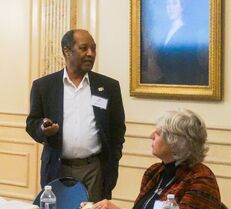 The Collaborative’s Research Thought Leaders help provide the strong research foundation for the Collaborative’s work. Each Thought Leader is nationally and internationally recognized in their own field and brings an extensive depth of experience and expertise. They also are adept at working across disciplines. In previous newsletters, we brought you interviews with each of our Thought Leaders. This new series, launched in the Winter 2021 newsletter, reflects on how you might apply some of their most important ideas to your work in STEAM education. To do this, we’re using Collaborative research findings and examples of successful applications of these ideas in teaching practices. The first article in this series examined creative and innovative thinking. The second article explored STEAM and interdisciplinary learning. This third article in the series looks at collaboration. A future series article will address STEAM models. The information below is based on Thought Leaders’ interviews and an in-person convening in Washington, D.C. in 2016, that was supported in part by the National Endowment for the Arts. Collaboration A hallmark of effective practices in STEAM education is collaboration, both among students and among teachers. Thought Leader Input:
** Transdisciplinary:
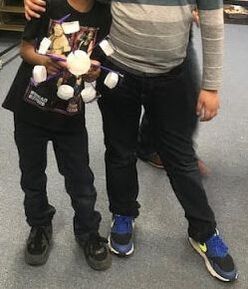
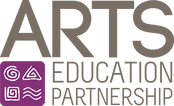 By Mary Dell’Erba, Collaborative Advisory Council member On July 13-14, 2021, the Arts Education Partnership (AEP) hosted a Policy Academy on STEAM Education. The event convened teams of five leaders from three states—South Carolina, Vermont, and West Virginia. Participants created action plans to advance STEAM education in their respective states. During the two-day event, state teams received information and coaching from AEP and Education Commission of the States, with which AEP is aligned. Participants also received coaching and information from STEAM leaders in Georgia, Ohio, and Nevada. The proposed state plans include items such as instructional resources; assessment considerations; defining STEAM education at the state level through policy statements; hosting a statewide summit to convene STEAM leaders and facilitate collaborations; and articulating pathways for STEAM school certification. AEP will continue to offer targeted technical assistance to these states, in collaboration with the Innovation Collaborative, for up to 18 months. This assistance will support implementation of the states’ plans in alignment with the goals of the Innovation Collaborative’s States’ Initiative. The technical aid may include: information requests, providing testimony or research on STEAM education, facilitating meetings, or conducting state visits, travel permitting. The Collaborative’s State’s Initiative, led by AEP’s Mary Dell’Erba, focuses on providing the Collaborative’s STEAM research findings to support STEAM education at the state level. Mary Dell’Erba is the Arts Education Partnership’s Senior Project Manager. For more information about the Policy Academy, please contact her at mdellerba@ecs.org.  The Collaborative’s first goal is conducting and sharing research on the many ways that STEAM (Sciences, Technology, Engineering, Arts/Humanities, and Math) promotes creative and innovative thinking for all demographics. Throughout the 7 years of this research in K-12, the Collaborative has focused on discovering the most effective practices in classroom implementation and teacher professional development. This work has been generously supported in part by funding from the National Endowment for the Arts. To share its research, the Collaborative publishes its findings in peer-reviewed journals, among other venues. The third Collaborative research article, “Effects of Transdisciplinary STEAM Lessons on Student Critical and Creative Thinking”, has just been published by The Journal of Education Research, a publication of Routledge, Taylor, and Francis, the leading publisher in academic education. The article is primarily authored by Bess Wilson, PhD, Collaborative K-12 Co-chair and Assistant Professor, Department of Foundations and Secondary Education, University of North Florida. Secondary article authors are Collaborative Executive Director Lucinda Presley, Collaborative Innovation Fellow Kimberly Olson, and Dr. Wilson’s graduate assistants HwanHee Song and Julie Johnson. The article shows how STEAM classroom lessons and experiences can strengthen student creative thinking, problem solving, collaboration, and persistence. In line with another Collaborative goal, applying research to practice, these findings, along with all other research findings, will be applied to the Collaborative’s upcoming STEAM teacher professional development and classroom implementation in the 2021-22 academic year. These findings will be integrated with the Collaborative’s Culturally Responsive Teaching strategies to meet the needs of all learners, especially those in underrepresented populations. You can find the article at: Effects of Transdisciplinary STEAM Lessons on Student Critical and Creative Thinking.  The Collaborative’s Visibility Committee has been researching strategies and content to help raise the public profile of the organization, motivate membership, and provide more value to member educators, administrators, and other invested stakeholders. Much of its proposed work focuses on website content and social media engagement. This includes:
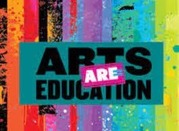 Arts education institutions and their members across the US are addressing Equity, Diversity, Inclusion, and Access (DEIA) in a variety of ways. View this Arts Are Education Talk It Up podcast to learn some of the ways this is being accomplished. The podcast is hosted by Jim Palmarini, Educational Theatre Association Policy and Advocacy Advisor and Director of the Arts ARE Education (ARE) campaign. ARE is sponsored by the National Coalition for Core Arts Education (NCCAS), a coalition of national arts and arts education organizations working to make standards-based arts education available for every student. This ARE podcast features Erika Hawthorne, Education Specialist for the Arts Education Partnership (AEP), a national network of organizations dedicated to promoting arts education. In this podcast, Ms. Hawthorne discusses AEP’s Equity Working Group and its current efforts. 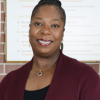 By Sharon Delesbore, PhD, Collaborative Board Member Sharon Delesbore, PhD, is a Collaborative Board member and President of the Association for Multicultural Science Education, an affiliate of National Science Teaching Association (NSTA). She also is Asst. Principal, LV Hightower High School, in Ft. Bend ISD, Missouri City, TX. This article is an adaptation of a blog she was invited to write for the STEM Teacher Leadership Network. This network is an NSTA affiliate that focuses on improving schools, policy, and the future of STEM education. As the Collaborative focuses on serving the needs of diverse populations, this article points out the importance of equity, diversity, and inclusion in science education. I must preface this piece with honesty. It was difficult for me to pull my thoughts together to write given the many incidents of injustice, white privilege and racism that remind us of the continued inequities in our society. In an effort to create an America of equality, we, as a nation, have worked hard not to offend “others”. When I say “others”, I mean the different groups of people who have felt neglected, negated, and punished for not fitting into the idealized image of being an “American” that is commonly communicated by our mainstream and social media. Truthfully, this country’s forefathers created a document framed in biased ideologies. Their definition of being “created equal” was limited to white men of financial means. It is 2021 and things have changed, with new, courageous voices speaking up, asserting that individuals and organizations must become self-reflective practitioners and conscientious reformers willing to meet the challenges of creating equity in all aspects of our society. The need for equity is most pressing in the education of our students, including in science education. Our work to create equity in science education will not come to fruition until educators recognize and realize that the work starts from within. Are we truly ready to look ourselves in the mirror and ask tough questions that go to the root of our beliefs about how we think about all people, whether black, white, Hispanic, Indian, male, female, rich, poor, disabled, or gifted? I am speaking particularly of and to anyone who feels that they have not been represented with dignity. I am speaking of and to anyone who believes that they do not have a seat at the table of decision-making. I invite you to pull up your own chair because your thoughts are valued and your input wanted. For any conversation to begin, I always like to start with an operational definition of words. There are many shared definitions of diversity, equity and inclusion; the ones I’m sharing here are but one example. Diversity refers to the demographic subgroups within educational institutions. The Next Generation Science Standards (NGSS), released in April 2013, identified student diversity through seven case studies noted in Appendix D – “All Standards, All Students: Making the Next Generation Science Standards Accessible to All Students". The four accountability groups defined in No Child Left Behind (NCLB) Act of 2001 and the reauthorized Elementary and Secondary Education Act [ESEA], Section 1111(b)(2)(C)(v) were;
Further, student diversity is extended by adding three groups:
Equity is the intentional consideration, formulation, and implementation of practices, policies, and procedures within an organization to deter systemic biases that can hinder the measurable outcome of programming as well as create barriers that can affect student achievement within demographic subgroups in comparison to institutional expectations and performance standards. Equity fosters accountability between stakeholders involved in the decision-making process and those designated to perform within the organization. A conscientious, equitable mindset can help begin the process of desegregating and reversing bias implications of practice. To create equity in science education will demand individual and corporate reflection that includes asking some tough, fundamental questions. One strategy that might help is the application of the A-List Approach©, which was developed by Dr. Delesbore to create equitable opportunities in science education for all students. It can address this dilemma by:
Creating equity in science education is a ginormous undertaking. As scientists, we thrive in data. The challenge is reminding decision-makers our students are the deliverable outcome of the curriculum we develop, time we invest, budgets we anticipate, and futures that we hold in the palm of our hands. Every decision we make determines the destiny of every child. We must take the blinders off, remove bias, prejudice, and racism from the equations that we formulate in our society to ensure that all students have the same opportunity to excel and contribute to our America, whether in science or whatever endeavor they pursue, given the educational opportunity they so richly and equally deserve. About the Author: Dr. Sharon Delesbore is the president of the Association for Multicultural Science Education (AMSE), an affiliate organization of the National Science Teaching Association. AMSE was organized to stimulate and promote science teaching to students of culturally diverse backgrounds and to motivate such students to consider science-related careers; to explore and promote the improvement of science curriculum, educational systems and teaching methods in school; to assist such stimulation; to recruit and involve teachers of all minorities in science education; and to initiate and engage in activities and programs to further improve the science education of culturally diverse students. 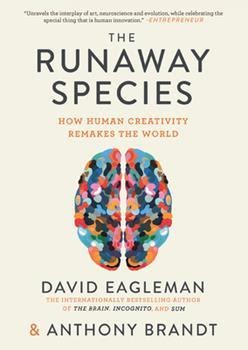 In case you missed it when published in 2017, The Runaway Species: How Human Creativity Remakes the World is well worth a weekend of deep thought. Authors David Eagleman (a neuroscientist) and Anthony Brandt (a musician) take a unique look at human history and innovation from their diverse but complementary perspectives. Eagleman is the Emmy-winning writer and host of the PBS series, The Brain. He also is the director of the Center for Science and Law at Stanford University. Brandt is a composer and Artistic Director of the contemporary music ensemble Musiqa, winner of two Adventurous Programming Awards from Chamber Music America and American Society of Composers, Authors and Publishers (ASCAP). Not an “odd couple” at all, the co-authors look at art and science together. They examine how many innovators--from Picasso to Steve Jobs--build on what already exists to create something new. Their paradigm is organized into three categories:
The book is filled with countless other examples, including how the invention of flamboyant hairstyles, bicycles, and stadium designs might share the same basic processes. As one reviewer noted: “Understanding ourselves and our creativity is a journey that also helps us to understand what makes us human". What makes this book especially valuable to educators is that these examples can be models for students to use when innovating. A question such as “Could you solve this challenge by bending or breaking or blending?” can be the spark. Students who might have been convinced that they were not creative can find ways to appreciate themselves and their own unique ways of thinking. “Thriving in a constantly changing world requires us to understand what’s happening inside our heads when we innovate', the authors remind us. 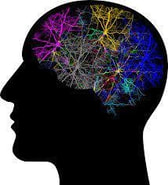 In Fostering a STEAM Mindset across Learning Settings, Laura D. Carsten Conner, Blakely K. Tsurusaki, Carrie Tzou, Perrin Teal Sullivan, Mareca Guthrie, and Stephen M. Pompea describe their seven-year project to connect both out-of-school and in-school practitioners and settings. They initially developed their conceptions of STEAM mindset in out-of-school summer academies for youth. The STEAM kits they developed in these settings were eventually adopted by the local school district. Their report, in Connected Science Learning (October - December, 2019) describes “a tapestry of STEAM connections between in-school and out-of-school settings.” Most impressive in their report is evidence that “self-compassion, rather than self-judgment, can help quiet (a child’s) negative inner voice and promote creative practice”. They describe these key principles:
 In The Trouble with STEAM and Why We Use It Anyway! its diverse authors argue: “STEAM offers significant promise through its focus on multiple ways of knowing and new pathways to equitable learning. On the other hand, it is often deployed in theory, pedagogy, and practice in ambiguous or potentially problematic ways toward varying ends”. The authors analyze varying STEAM definitions and warn that because the approach has so many different interpretations, using the term STEAM “may force a backlash against inter- and transdisciplinary approaches to learning”. They trace the history of the approach and document a variety of research strands that have contributed to understanding STEAM today. The report pays particular attention to the great potential of programs “where STEAM is conceptualized as both pedagogical and mutually instrumental, meaning neither the STEM fields nor arts are privileged over the other, but all fields are equally in play with the potential for transforming educational policy and practice”. This scholarly article can provide significant support to teams that want to innovate across boundaries in ways that break traditional norms. The extensive reference section provides more empirical support for developers. Read more about the work of authors Sam Mejias, Naomi Thompson, Raul Mishael Sedas, Mark Rosin, Elisabeth Soep, Kylie Peppler, Joseph Roche, Jen Wong, Mairéad Hurley, and Philip Bell in Science Education, March, 2021. 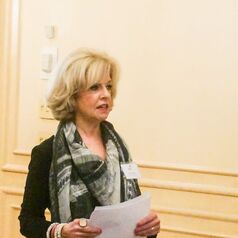 The Collaborative’s Research Thought Leaders help provide the strong research foundation for the Collaborative’s work. Each Thought Leader is nationally and internationally recognized in their own field and brings an extensive depth of experience and expertise. They also are adept at working across disciplines. In previous newsletters, we brought you interviews with each of our Thought Leaders. This new series, launched in the Winter 2021 newsletter, reflects on how you might apply some of their most important ideas in your STEAM work. To do so, we’re using examples of the Collaborative’s successful application of these ideas in K-12 classroom implementation and teacher professional development. The first article examined creative and innovative thinking. This second article examines STEAM and interdisciplinary learning. Future series articles will look at such topics as applications of these concepts to learning settings, STEAM educator training, and creating effective STEAM models. The information below is based on Thought Leaders’ interviews and an in-person convening in Washington, D.C. in 2016, that was supported in part by the National Endowment for the Arts. Interdisciplinary Learning Interdisciplinarity refers to knowledge that spans disciplines and fields. It is particularly relevant in the 21st century since many innovations occur at the intersections of various fields. Also, we live our fast-paced lives in an interdisciplinary manner, often experiencing science, art, and humanities phenomena simultaneously. Thought Leader Input
Application
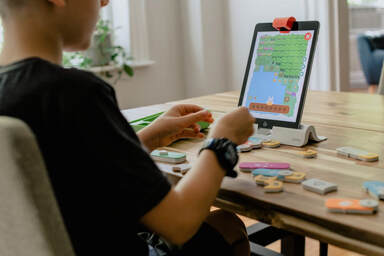 By Lucinda Presley and Tricia Shelton In this article written for Collaborative member organization, the Arts Education Partnership, authors Lucinda Presley and Tricia Shelton detail how the Collaborative and the National Science Teaching Foundation can support STEAM-based learning for remote learners in these challenging times and into the future. Since remote and hybrid learning are dominant modes of teaching for the foreseeable future, educators and students alike can benefit from STEAM learning strategies to promote engagement and learning across settings. Research suggests that STEAM (the integration of sciences, technology, engineering, the arts and math) education can help address these needs by increasing student engagement and preventing learning loss associated with remote learning. STEAM education can help develop students’ creative, social and emotional, and critical thinking skills to enable them to effectively process and navigate these unprecedented times. The transdisciplinary focus of STEAM education is also well positioned to reduce redundancy and maximize learning across the disciplines when instructional time is at a premium. The National Science Teaching Association (NSTA) and the Innovation Collaborative have developed strategies and recommendations for high-quality STEAM learning for all students, which educators can integrate into their remote learning situations. Pillars of Sensemaking NSTA recommends four “must haves”, or pillars, for this type of high-quality instruction. These four sensemaking pillars focus on the following opportunities and learning for all students:
These sensemaking pillars dovetail with successful hybrid lesson planning strategies the Innovation Collaborative found in preliminary studies that were completed with support from the National Endowment for the Arts. The following strategic steps are designed for real-world problem solving that engages and empowers students to explore important concepts:
While the future is uncertain regarding remote and hybrid learning, we are certain that STEAM education will continue to provide meaningful learning experiences for students. Enjoy seeing students thrive and grow! aep-arts.org 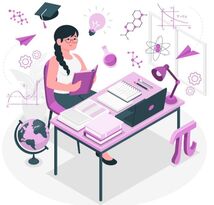 The Innovation Collaborative’s national online STEAM teacher professional development series is expanding. Launched in spring, 2020, with support from the National Endowment for the Arts, this professional development program trains teachers in STEAM effective classroom practices using the Collaborative’s K-12 research outcomes. Despite the pandemic, more than 24 administrators and arts, sciences, math, and social studies teachers from across the U.S. have already completed the course. The current spring, 2021, cohort is simultaneously training teachers, administrators, and course facilitators. These facilitators are course graduates and also Collaborative Innovation Fellows. Given their gained experience and expertise, these facilitators will be well positioned to conduct future online professional development for the Collaborative. Both teachers and administrators report a desire to continue their training. To do so, the 2020-21 cohorts have begun networking virtually to continue collaborations long-term through guidance and a networking platform provided by the Collaborative. By David Pyle, Collaborative Advisory Council member I have a confession to make: I love organic chemistry. It's true. My original education was in the arts. Music and a BFA in painting and drawing. Then I was ruthlessly seduced by chemistry, physics, and math. That combination fueled a deeply rewarding career in business and media. A career that never would have happened had I not studied music, art, AND science. Now, after 35 years that included managing consumer brand marketing, teaching, editing, writing, and executive leadership in publishing and media, I'm focusing on creating stories and resources that make those intersections between the arts and sciences - and the opportunities that arise within - clear and irresistible. For example, see the short resource videos at my CreativEnergy channel (https://tinyurl.com/5guohbwa) with titles like: ‘Mystery of the Portly Painting’ (did you know that oil paintings the world over are gaining weight at this very moment) and ‘Where'd that Color (Van)Gogh?’ (let's throw basketballs at poodle-shaped molecule models!). ‘From Caves to Charcoal to Carbon Fiber’ takes a Fred-Flintstone-Cro-Magnon guy from chewing on bear fat to inventing art-making to the molecular tetrahedrals of carbon. I’ve had such a rewarding career - in business, teaching (art + Montessori), publishing and media - not because I operated as an “art-person” or a “science-type”, but because I’ve been fortunate to live and work in the convergence of the two. I had an inkling of what this could mean when I took my first college course in organic chemistry, a topic that people often say brings them to their knees. It was a summer program in which the class met for three hours each day, jamming two full semesters into just 10 weeks. I did well in the class. Really well. And I found that I loved the subject. Why? Because organic chemistry is highly sculptural. To understand what's happening at a molecular level, you have to be able to visualize what's happening in three-dimensions. I soon concluded that I was in love with the subject (in a way that other students clearly were not!) because of the experience I had as a visual artist. I could clearly SEE what was going to happen around the bonding sites of different molecules and the mechanisms that would drive their "dance”. Over a period of years, it became abundantly clear to me that one of the most powerful and effective routes to really seeing the mechanisms of chemistry and physics - and of business and management - is through the creative skills that come with an artistic, integrative eye and ear. I've written and spoken about the "Perfect Intersection" in the arts; the fact that learning in the arts creates context and meaning around and within the other disciplines. In the hopes of making that connection tangible and real for others - and to add another voice to the many excellent programs and resources being developed across the STEAM community - I've launched the aforementioned CreativEnergy channel. Free lesson plans and other resources will be added soon. Confessions of a love for other disciplines? There are so many others who can say the same. And while confession may be good for the soul - I hope it will also be good for STEAM! About David Pyle  David's 35-year career in the arts and business has been fueled by his education in music, painting, and chemistry. In addition to experience as a teacher, he's managed consumer brands in the artist's products category, serving as Director of Marketing for Winsor+Newton and then Brand Director for Liquitex. In 2000, his book, What Every Artist Needs to Know About Paints and Colors, was published by Krause. Over the last 15 years, he’s served as publisher for the largest media brands in the fine art-making and crafting categories, most recently as Senior Vice President/Group Publisher with F+W Media managing The Artist’s Magazine, American Artist, Watercolor Artist, Interweave Knits, Love of Quilting and, online, ArtistsNework.com, ArtistsNetwork.TV, QuiltingDaily.com and Interweave.com and more. Through it all, he's continued to paint. In 2020, he left the corporate media world and launched a number of art-making initiatives, a new marketing services group called Pyle Creative Studio, and a series of educational resources for the art and science community. 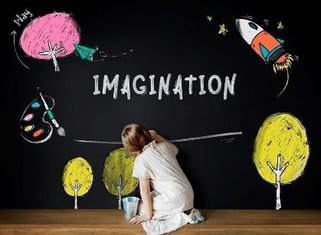 By Juliana Texley, Collaborative Board member and former NSTA President Is there a divide between science and imagination? Common conceptions of science as non-imaginative persist, but research suggests the critical role of imagination, both in the practice of STEM and in shaping learners' perceptions of themselves. Leaders at the Museum of Science, Boston, are exploring the intersections of imagination, STEM, and education practice in ways that are actionable for museum professionals. Their project will consider how research on imaginative thinking, and perspectives on the role of imagination in STEM practice and STEM education, can be systematically applied to support STEM learning in museum contexts. A grant from the Advancing Informal STEM Learning (AISL) program at the National Science Foundation (NSF) will support this project. This NSF division “seeks to advance new approaches to, and evidence-based understanding of, the design and development of STEM learning in informal environments; provide multiple pathways for broadening access to and engagement in STEM learning experiences; advance innovative research on and assessment of STEM learning in informal environments; and develop understandings of deeper learning by participants”. Research in the fields of neuroscience, psychology, child development, and education suggest ways that imagination can be fostered and improved. This evidence could be applied to the design of museum experiences to help improve STEM outcomes. The project will complete a literature review, a document review, and a survey of ISE (Informal Science Education) professionals. It will host a convening of STEM professionals (researchers, practitioners, educators, and others) and disseminate products designed to inform future project development. As a result of these activities, the leaders hope to prompt conversations about imaginative thinking, identify areas for future research, and influence future research. They hope to inspire imaginative thinking among public audiences through exhibitions, programs, and other designed experiences. The grant Principal Investigators are Rebecca Kipling and Christina Reich of the Museum of Science, Boston. You can find out more about the project at: https://nsf.gov/awardsearch/showAward?AWD_ID=1906899&HistoricalAwards=false Using Drama to Understand the Nature of Science“Using Drama to Expand Student Understandings of the Nature of Science” An article by Lydia E Carol-Ann Burke, Alison McAvella, and Anne Wessels For decades researchers have identified the affective barriers that prevent students from identifying with the roles and practices of science. However, the December, 2020, Science Teacher journal describes experiences that contributed to significant gains in student understanding of the nature of science. These pedagogical strategies allow students to express their feelings and describe experiences in ways that are not common in science education. In an introductory strategy, students sort 15 statements about the nature of science as “Agree” or “Disagree.” Then, students review their whole group’s record of agreement or disagreement and the teacher facilitates a discussion about understandings and students’ personal experiences. In Strategy 2, student pairs create ‘freeze-frame’ depictions (tableaux) to represent the relationship between Science and Student. This strategy of striking and holding a pose is similar to the recent mannequin challenge trend and could be explained and set up in the same way. In Strategy 3, students observe and discuss science-themed drama. The authors cite the Copenhagen movie as one example of a drama that allows students to consider the nature of science. In Strategy 4, students create scenes that represent extracts from a larger storyline. First, the class collectively generates a list of important contemporary scientific issues. These issues can be local or global and can be general or specific to the topic of study. After creating the list, students as a group prioritize the issues (e.g., using a dotmocracy survey or other voting strategy). The top-ranking issues are then distributed as topics for small group work. There, they develop a short scene based on the issue assigned. The goal is to work toward an “inciting incident”, an event that would propel the main character into the central problem of the story in a dramatic or life-changing way. The authors recommend that teachers be patient as students express themselves, being very attentive to the students’ comments, repeating and seeking amplifications and clarifications, until students are satisfied that they have clearly communicated their ideas. https://www.nsta.org/science-teacher/science-teacher-novemberdecember-2020/using-drama-uncover-and-expand-student Ya Gotta Have Art!ESL (English as a Second Language) students in the Engaging Newcomers in Language and Content Education (ENLACE) Academy at Lawrence (Massachusetts) High School, share the same challenges and more as native English-speaking students in these “unprecedented circumstances”. This started with an effort to get a 3-D printer for the art department. It ended up as a major effort in the Samsung Solve for Tomorrow program for ENLACE art teacher Shaddai Vargas. Samsung sponsors a national competition that challenges public school teachers and students to come up with STEM-based solutions to problems impacting their communities. The contest helped Lawrence students come up with a whole world of new possibilities that integrate art, engineering, and technology. Vargas writes: “Teaching STEM through PBL [Project Based Learning] is something that I want to continue for the positive impact it will have on the future…not just for my students but for our community and the world. Integrating technology and PBL in my art class opened a new special vibe where creativity and community are in a constant boost”. Vargas’ students’ projects involved looking for a solution to natural gas explosions, which had devastated homes in the community. As an art teacher, he felt the experience opened a “whole new world of opportunities” for his curriculum. https://www.eschoolnews.com/2021/02/10/how-an-art-teacher-tackles-stem-and-pbl/2/ REALM ProjectREopening Archives, Libraries, and Museums (REALM) is a research project conducted by OCLC (a global library cooperative), the Institute of Museum and Library Services, and Battelle (a global science and technology research institution). It will produce science-based information about how materials can be handled to mitigate COVID-19 exposure to staff and visitors of archives, libraries, and museums. Battelle has contributed data to guide the reopening process. Currently in the third stage of the project, the partnership is monitoring the protocols that have been developed. https://www.oclc.org/realm/home.html EvaluatinG Computer Workshops at the Science MuseumDafni Konstantinidi-Sofrona has reported on research about how computer workshops are interfacing with and supporting science learning in informal settings. The CoderDojo workshops at the Science Museum, London, United Kingdom, are part of the CoderDojo global movement of free, volunteer-led, community-based programming clubs for young people. CoderDojo believes that an understanding of programming languages is increasingly important in the modern world, that it’s easier to learn these skills early, and that nobody should be denied the opportunity to do so. https://www.nsta.org/connected-science-learning/connected-science-learning-march-april-2021/evaluation-computing Larry Ferlazzo offers “Ten Culturally Responsive Teaching Strategies for the Science Classroom” in Education WeekThis column summarizes the culturally responsive teaching experiences and recommendations of 4 teachers, such as:
https://www.edweek.org/teaching-learning/opinion-ten-culturally-responsive-teaching-strategies-for-the-science-classroom/2021/02 Building an Anti-racist Science ClassroomNSTA’s (National Science Teaching Assn.) Next Gen Navigator features a blog on ways to create a supportive and equitable environment in the science classroom. Some suggestions from the blog are listed below.
Read the entire blog at https://www.nsta.org/blog/building-anti-racist-science-classroom 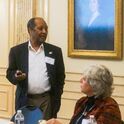 The Collaborative’s Research Thought Leaders help provide the strong research foundation upon which the Collaborative’s work rests. Each Thought Leader is nationally and internationally recognized in their own field and brings an extensive depth of experience and expertise. They also are adept at working across disciplines. In our previous newsletters, we brought you interviews with each of our Thought Leaders. This new series will consider how you might apply some of their most important ideas in your STEAM work. To do so, we’ll use examples of the Collaborative’s successful application of these ideas in K-12 classroom implementation and teacher professional development. This first in a series of articles looks at STEAM’s relation to creativity and innovation. Future series articles will look at such topics as equity; interdisciplinarity; applications of these concepts to learning settings; STEAM educator training; and creating effective STEAM models. The easily readable information below is built upon the Thought Leaders’ newsletter interviews, on conversations with them, and on an in-person convening in Washington, DC, that was supported in part by the National Endowment for the Arts. Creativity and Innovation For the Collaborative, the definition of creativity relates to novel ideas, while innovation refers to the application of those novel ideas to appropriate uses. THOUGHT LEADER INPUT
APPLICATION
|
